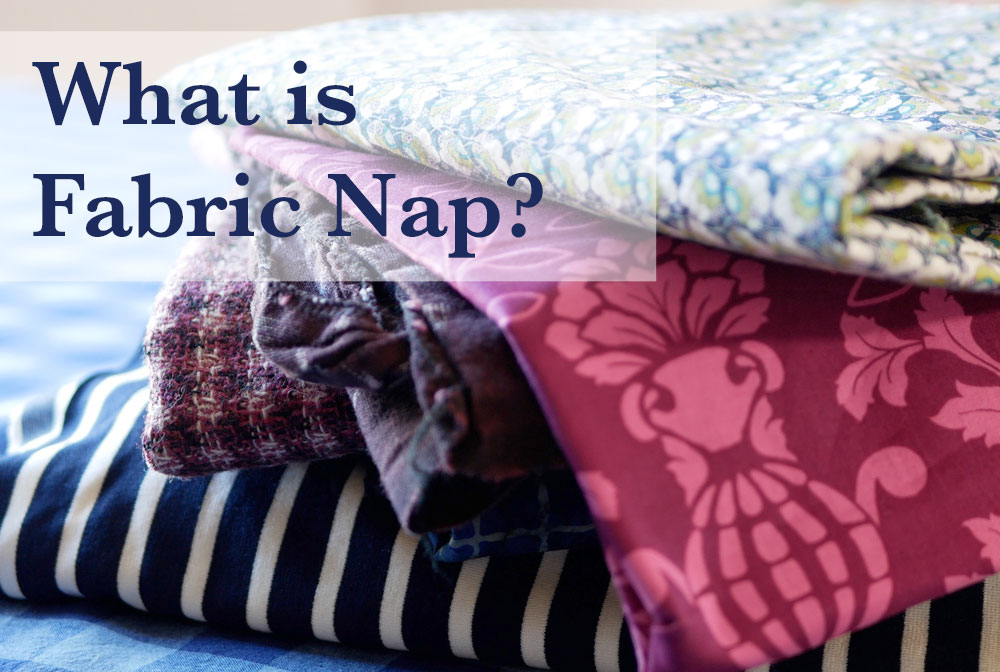
What is Fabric Nap and why do you need to know?
You may have seen the word Nap, or With Nap or Without Nap, on the back of patterns. And it’s important to know if your fabric has a Nap because it can change the amount of fabric you need to make the garment. You could also ruin a garment by not paying attention to the nap.
Nap refers to a characteristic of fabrics but it is also used as a term to describe a characteristic of printed fabric.
My latest video is all about Fabric Nap; what it is, what it means and how to work with it.
Not a video person? No worries, just read on for all the info.
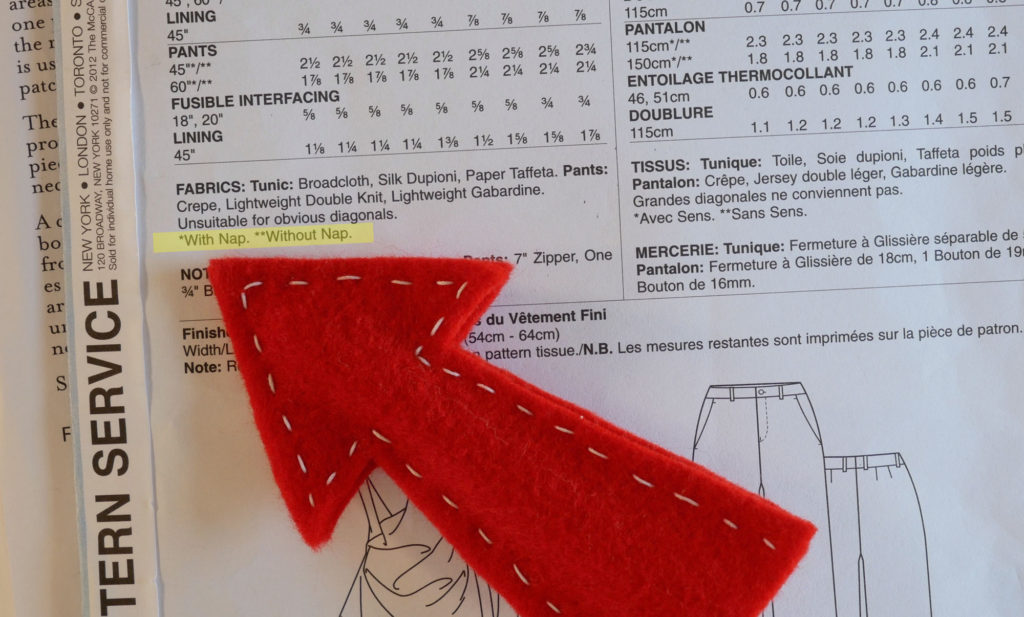
What is Fabric Nap?
When you rub your hand down the back of a furry animal you go with the fur. When you rub up their back you go against the fur. Fabric is the same: you can rub down the length and go with the nap or rub up the length and go against the nap.
Fabric Nap refers to the raised surface of a fabric.
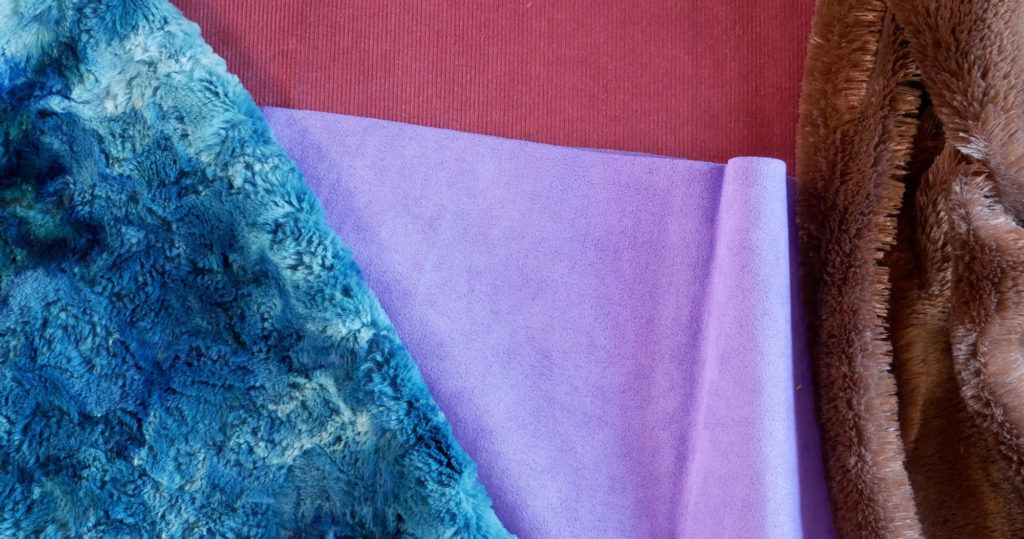
Fabrics that have a Nap:
- fake fur
- corduroy
- velvet and velveteen
- many coat-weight fabrics made from animal fibers like cashmere, alpaca, mohair, and some plush wools.
- suede and Ultrasuede
Most fabrics do not have a Nap but if yours does it’s very important to pay attention to it even if it’s subtle because the light reflects off the fabric differently where the nap is laying down and where it is pushed up. For example; corduroy pants. Run your hand down the leg it’s lighter, up the leg darker. (Or sometimes vis-versa)
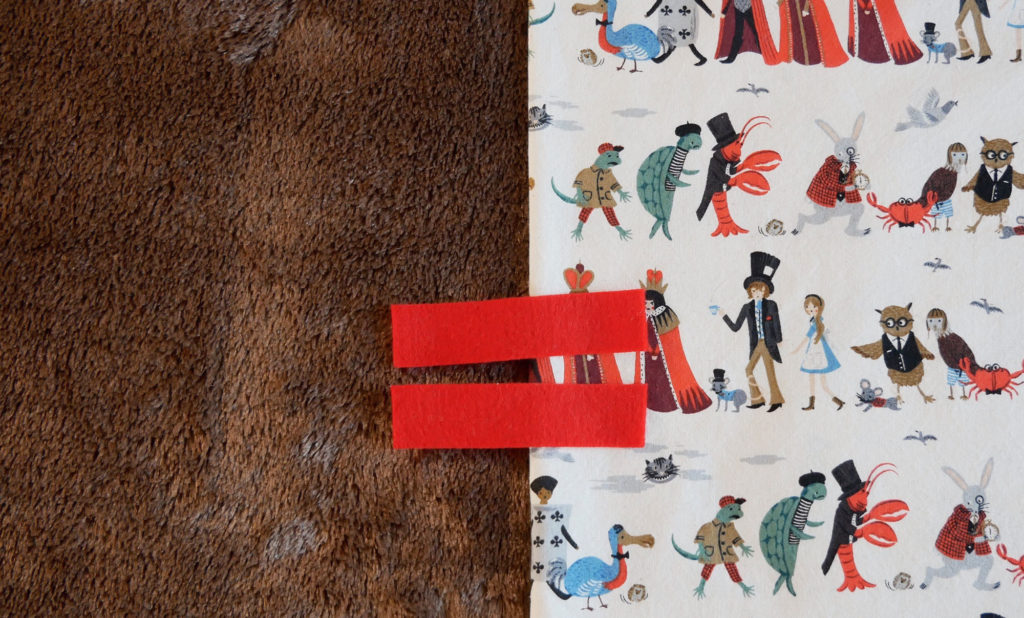
Many times the word nap is also used when talking about a one-directional or one-way design fabric. The fabric itself doesn’t have a feeling that goes in one direction, like a nap, but the design, either printed or woven into the fabric, goes in a single direction.
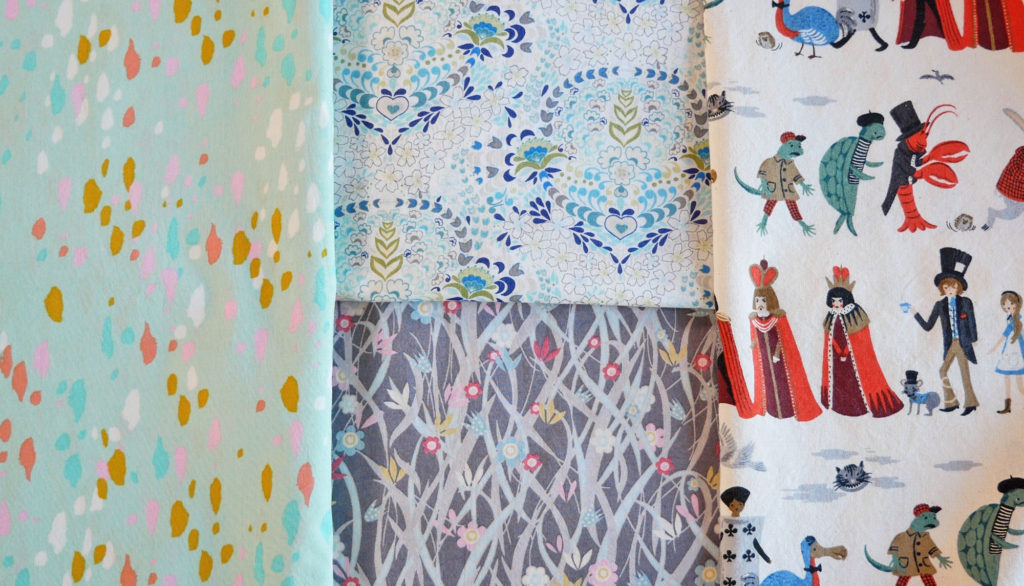
Not all prints are one-directional and some are very obviously so. Take a close look at your prints though because sometimes the direction is there but it’s subtle.
The fabric on the far left above is non-directional as some of the design elements are facing both up and down (the redder splotches) and some are facing left and right (the gold splotches).
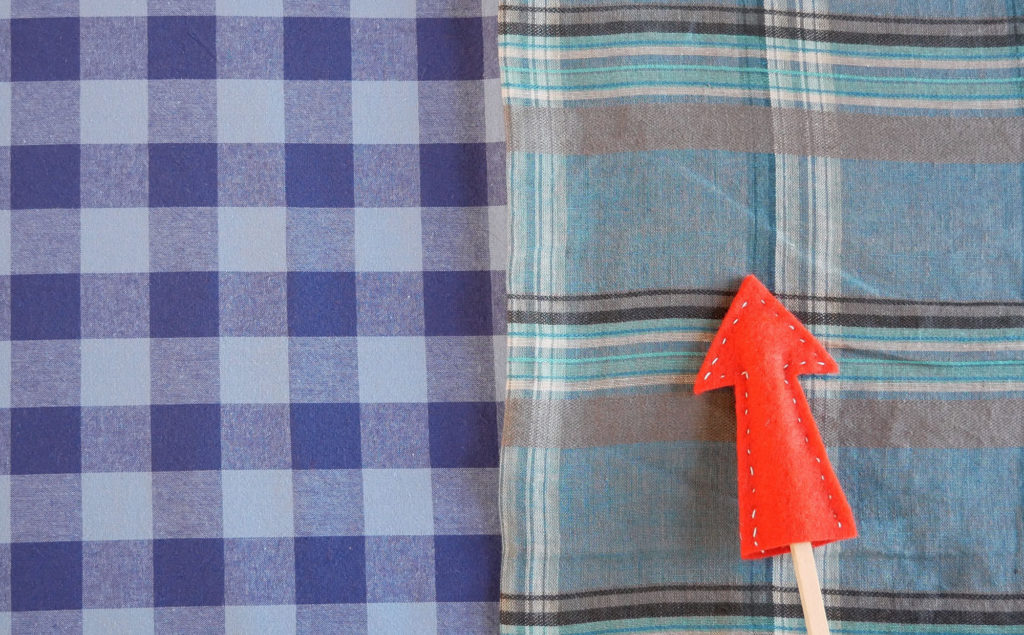
Notice in the fabrics above, the checked fabric on the left is actually NOT one-directional. All of the squares are the same size and repeated consistently in both directions. However, the woven plaid on the right is very asymmetrical. The vertical and horizontal bands do repeat but the colors in them go in one direction.
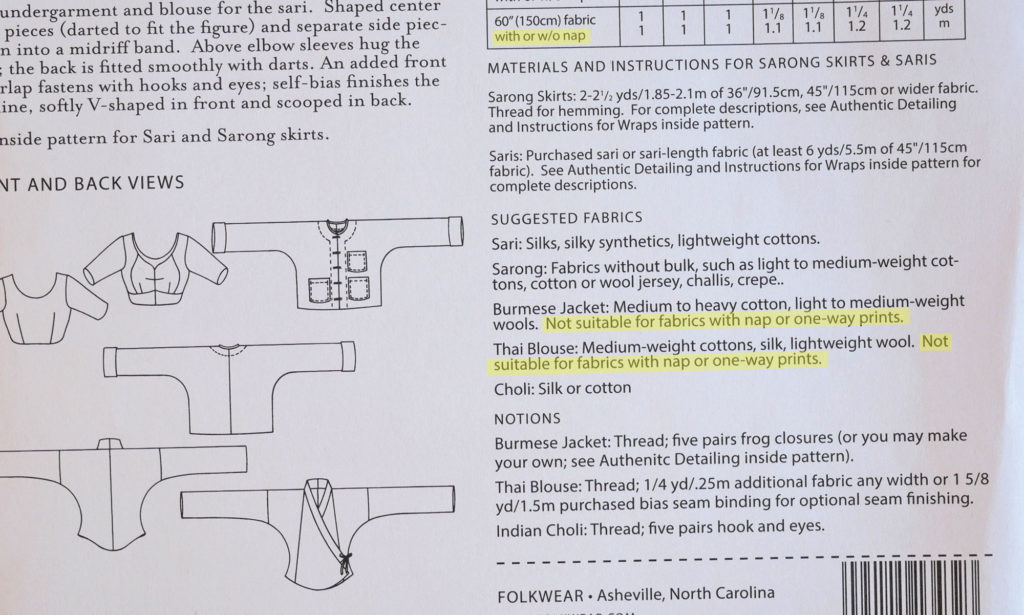
Fabric Nap and the Amount of Fabric You Need
When you look at a pattern to see how much fabric you need you might notice one of the following mentioned:
- with nap** without nap* (the asterisks will be with the words)
- Not suitable for fabrics with nap or one-way prints
- Buy extra fabric to match plaids
- Or it doesn’t mention anything at all about Nap or extra fabric
When a pattern says With nap* it means if your fabric has a nap (or one-way design) buy the amount of fabric required with an * (Or however many asterisks they give it.)
Not Suitable for Fabrics with a nap or one-way print – well then, don’t even think about using one for this garment.
Buy extra fabric to match plaids – This one really isn’t fair. It’s like, “Thanks for the warning but where is all the other information?” But, actually, they don’t know how big your plaid is (the distance between repeating elements in your plaid) so maybe it is fair. In this case, you have to judge/guess the amount extra you will need OR go with a different fabric 😉
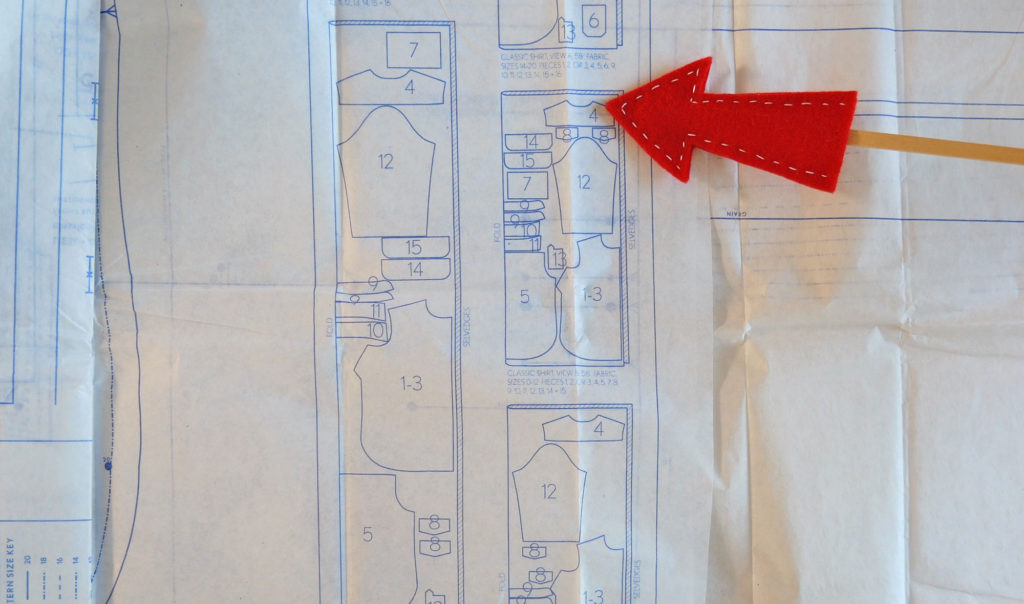
No mention at all? It probably means the fabric amount they are telling you to buy will be enough even if your fabric has a nap or One-directional design BUT you need to be certain. Open the pattern up and look for the cutting layout illustration.
Are all the pattern pieces in the illustration facing the same direction? All the shoulders facing one way all the hems facing the opposite way? If so it means the amount of fabric the pattern says you will need is for fabric with or without a nap. You’ll still need extra to match plaids or stripes or large prints.
If it shows pattern pieces going both directions it’s assuming your fabric does not have a nap. So you’re back to guessing how much fabric you need to make this garment and you’re reminded of that saying about people who assume things. (Life lessons learned from The Bad News Bears)
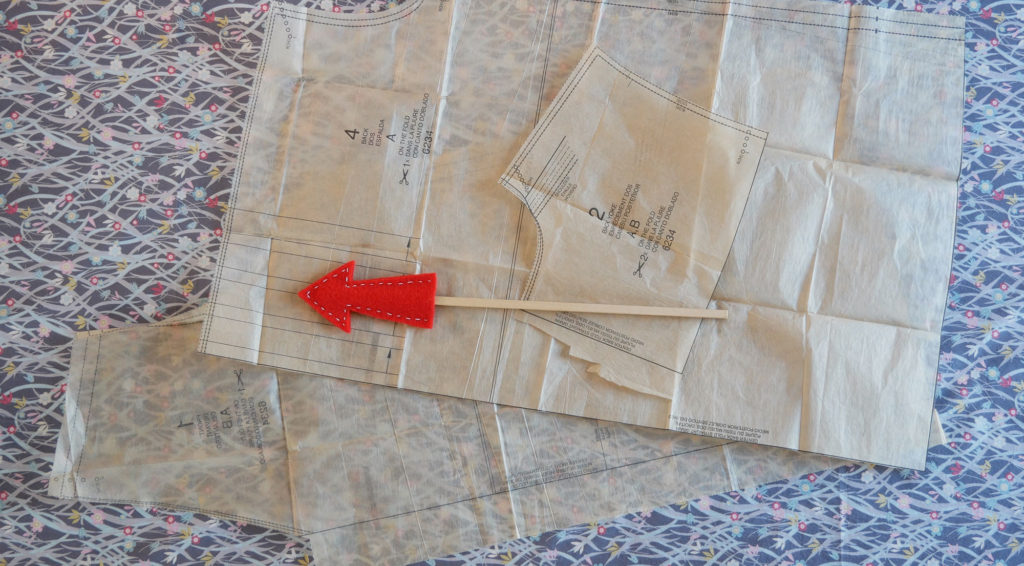
How to Work With Fabric Nap
When cutting out fabric that has a nap or one-directional design, place the top of each piece facing the same direction. For example, the top of all the shirt pieces will all be facing to the left or to the right. Don’t Tetris the pattern pieces on the fabric to save a few inches.
Cutting all the pieces going the same way means when your shirt or dress or skirt is all finished the nap or design will all be going in the same direction.
I had a friend who purchased some luscious, pricey, camel-colored wool alpaca blend for a coat. She cut it all out, started sewing it together and wondered why the right half and the left half looked different from each other. Well, she had cut out the coat pieces facing different directions and the light was now reflecting off them differently.
An expensive lesson that I have never forgotten, and I didn’t even pay for that lesson.
P. S. It is worth mentioning that one-directional designs and nap fabrics are not for zero waste sewing. In order to have all the pieces facing the same direction, you will have waste. But save those fabric scraps. They can be made into smaller projects, used to try out ideas, and turned into stuffing.
So remember, although many fabrics do not have a nap or a one-directional design check before you buy so you can buy extra and definitely check before you cut it. You’ll thank yourself later.
In my next video and post, I’m going to show how to cut out stripes so they match up when you sew.
I hope this was helpful if you have any questions about fabric nap please put them in the comments below, and I’ll be sure to reply. Happy Sewing!

Thank you very much for this article. Well-written and so helpful!:)
Thank you very much.